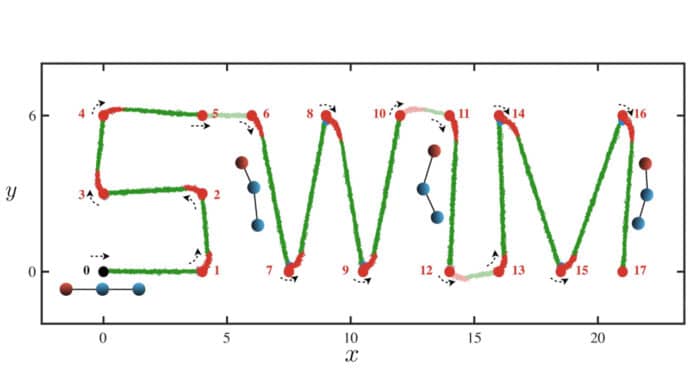Swimming microorganisms have evolved versatile navigation strategies by switching their locomotory gaits in response to their surroundings. Their navigation strategies typically involve switching between translation and rotation modes. Such an adaptive, multimodal gait-switching ability is particularly desirable for biomedical applications of artificial microswimmers, such as targeted drug delivery and microsurgery.
Now, researchers from Santa Clara University, New Jersey Institute of Technology, and the University of Hong Kong have been able to successfully teach microrobots how to swim via deep reinforcement learning, marking a substantial leap in the progression of micro-swimming capability.
The microswimmers could learn and adapt to changing conditions through AI. Much like humans (learning to swim) require reinforcement learning and feedback to stay afloat and propel in various directions under changing conditions, so too must microswimmers, though with their unique set of challenges imposed by physics in the microscopic world.
The team successfully taught a simple microswimmer to swim and navigate in any arbitrary direction by combining artificial neural networks with reinforcement learning. When the swimmer moves in certain ways, it receives feedback on how good the particular action is. The swimmer then progressively learns how to swim based on their experiences interacting with the surrounding environment.
“Similar to a human learning how to swim, the microswimmer learns how to move its body parts – in this case, three microparticles and extensible links – to self-propel and turn,” said Alan Tsang, assistant professor of mechanical engineering at the University of Hong Kong. “It does so without relying on human knowledge but only on a machine learning algorithm.”
During the tests, the researchers showed that it could follow a complex path without being explicitly programmed. They also demonstrated the robust performance of the smart microrobots in navigating under the perturbations arising from external fluid flows.
“This is our first step in tackling the challenge of developing microswimmers that can adapt like biological cells in navigating complex environments autonomously,” said Yuan-nan Young, professor of mathematical sciences at the New Jersey Institute of Technology.
Such adaptive behaviors are crucial for future biomedical applications of artificial microswimmers in complex media with uncontrolled and unpredictable environmental factors.
“This work is a key example of how the rapid development of artificial intelligence may be exploited to tackle unresolved challenges in locomotion problems in fluid dynamics,” said Arnold Mathijssen, an expert on microrobots and biophysics at the University of Pennsylvania, who was not involved in the research. “The integration between machine learning and microswimmers in this work will spark further connections between these two highly active research areas.”
